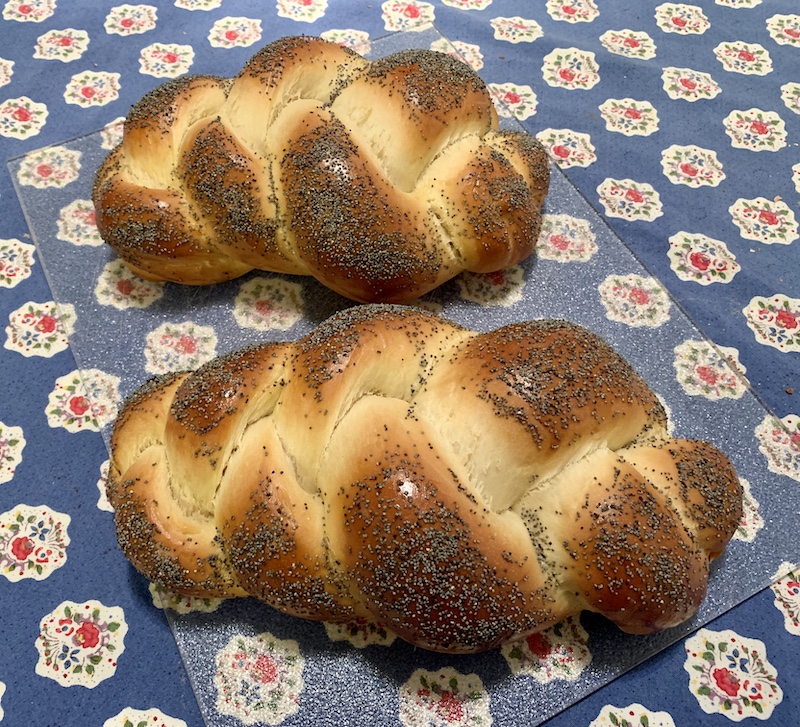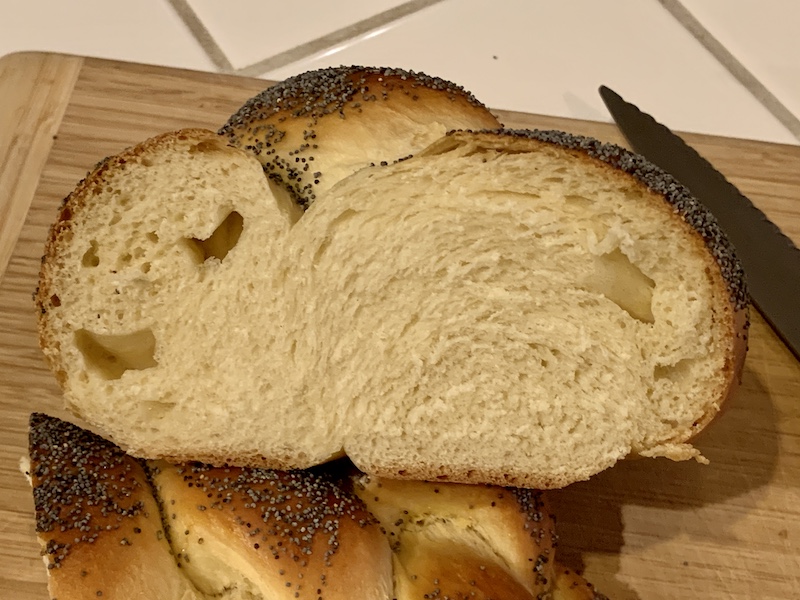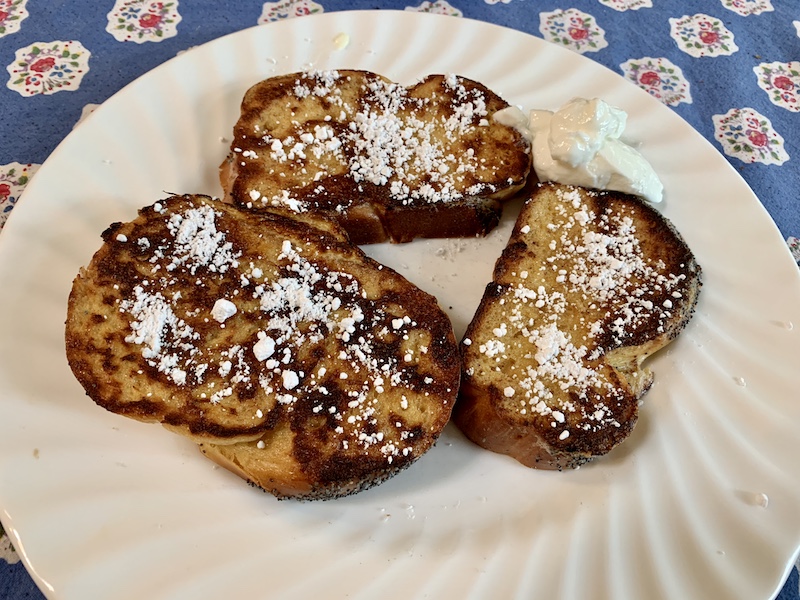Maggie Glezer's book, "A Blessing of Bread," is a wonderful collection of Jewish baking from around the world along with a sort of ethnography of baking in the Jewish communities of the Diaspora. This book has, by my count, about 40 recipes for challah, the bread particularly associated with the Jewish sabbath. But the author also identifies the challah recipe she makes for her own family. As with most of her recipes, she provides both a commercially yeasted and a sourdough version (without saying which her family prefers).
I have made the sourdough version several times over the years. I like it quite a bit but my wife. doesn't. Today I finally got around to baking the non-sourdough version. You know what? It is the best challah I have ever tasted, and my wife loved it too. I should not be (and am not) surprised, if the author of the book with 40 challah recipes has chosen this one as her favorite, one might expect it to be something special.
This is clearly an enriched bread with quite a lot of vegetable oil, egg and honey, but it is not rich like brioche nor even as sweet as a traditional Vienna dough. It is perfectly "balanced." I had some for dinner without any accompaniment other than a bowl of chicken soup. I could have eaten both loaves right then (but didn't). Tomorrow, it's going to be French Toast for breakfast!
Addendum: DanAyo found that Maggie Glezer had shared this recipe on Epicurious in 2004. Here is the link: https://www.epicurious.com/recipes/food/views/my-challah-235867
Note: Glezer hand kneads this bread. I mixed in a stand mixer, once the flour was added to the wet ingredients. I mixed about 3 minutes on Speed 1 and 4 minutes on Speed 2.



Addendum: It did make delicious French Toast.

David